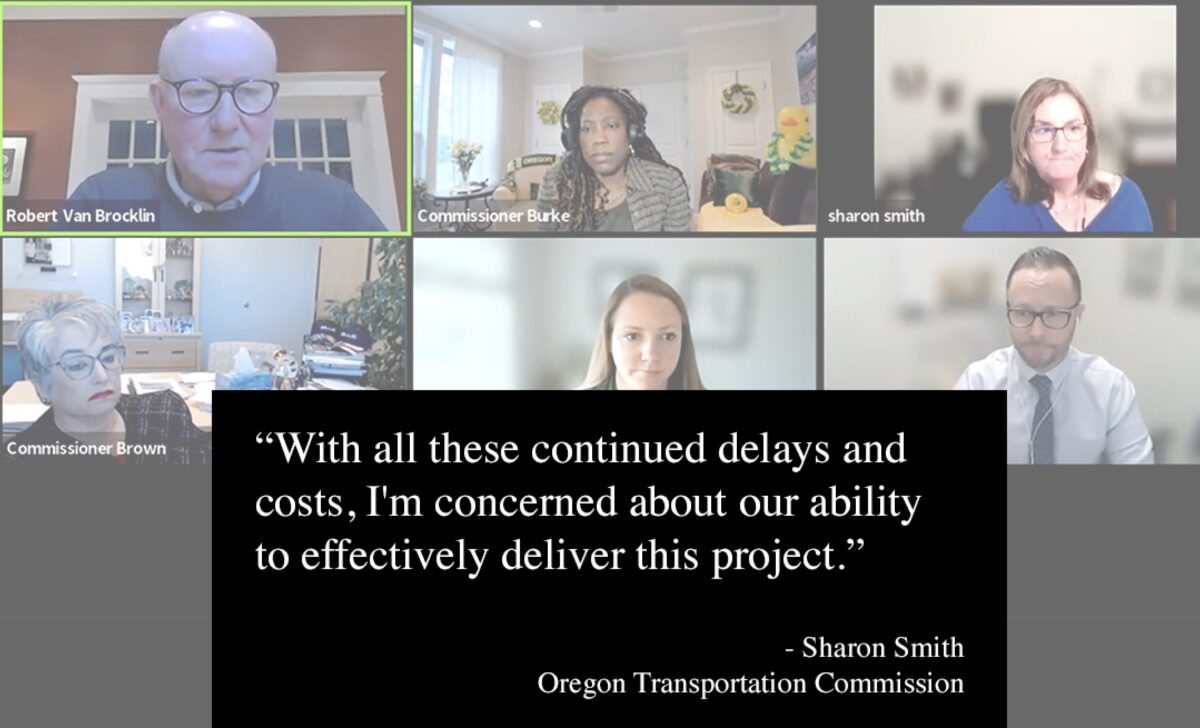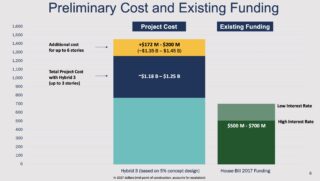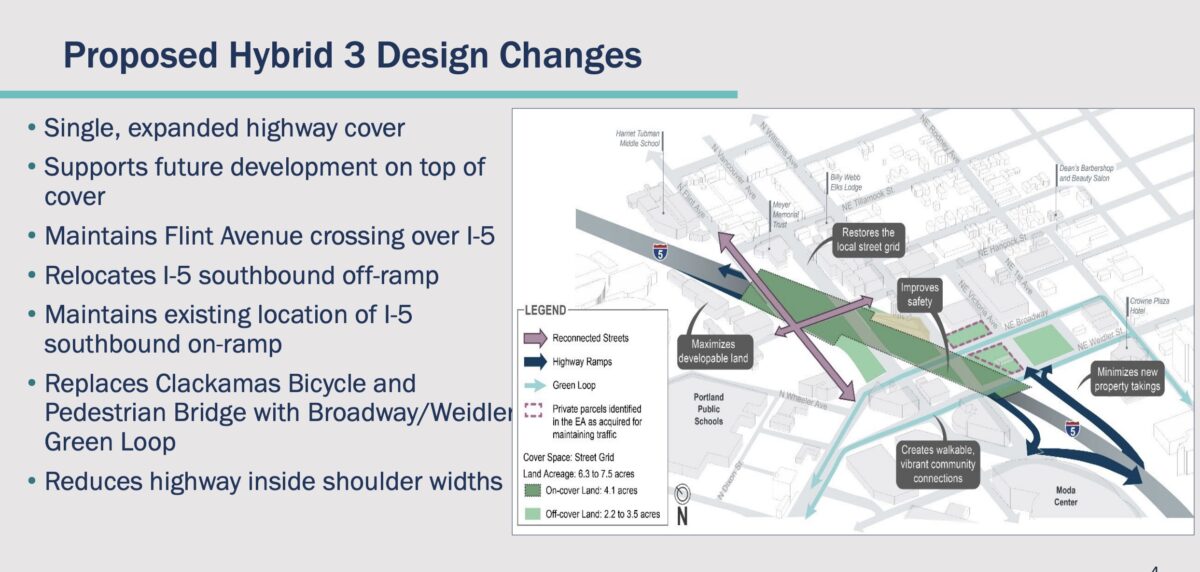
The Oregon Department of Transportation (ODOT) faced a bevy of bad headlines yesterday. The reason? The Federal Highway Administration decided to rescind its previous finding that their I-5 Rose Quarter project had passed its Environmental Assessment (EA) phase. Technically, the FHWA rescinded the project’s all-important “finding of no significant impact” (FONSI), a step required by federal environmental law.
While many people who oppose the project rightfully celebrated this news, ODOT tried to remain calm and reassured their bosses at the Oregon Transportation Commission and the public that it was all expected and that nothing will change. The project director, Megan Channell, even said she was “excited” to re-open the environmental review chapter of the project.
What’s really going on? What does this all mean for ODOT and the project in general? Here’s what we’ve learned:
ODOT downplayed the news
In the opening paragraph of their statement yesterday, ODOT aimed to have people think they decided to update the EA on their own accord. “[ODOT] announced plans,” they wrote, “to develop an updated Environmental Assessment… to reflect the proposed highway cover design supported by the community.”
“We didn’t anticipate the FONSI being rescinded.”
— Tia Williams, ODOT
The FHWA wasn’t even mentioned until the fourth of six paragraphs.
Rose Quarter Project Director Megan Channell said the EA update was, “A step we anticipated.” That’s only partly true. Since the new highway cover design (Hybrid 3) is significantly different than what was previously proposed (see below) and came after the FHWA’s initial FONSI decision, it makes sense ODOT would need to do more analysis.
But ODOT Urban Mobility Office Communications Director Tia Williams told me in a phone interview yesterday that, “We didn’t anticipate, obviously, the FONSI being rescinded… just that some level of environmental review would be needed to accommodate that [Hybrid 3] design.”
ODOT was warned by the FHWA on January 12th that a rescission was being considered.
Advertisement
Six days before the January 18th letter made public by No More Freeways Thursday, FHWA Oregon Division Manager Phillip Ditzler wrote ODOT a separate letter about this issue.
In that letter, which was sent to ODOT Director Kris Strickler with copies to Governor Kate Brown’s transportation policy advisor and the chair of the Oregon Transportation Commission, Ditzler clarified how FHWA would deal with changes pertaining to the Hybrid 3 decision and the related fact that ODOT says the new cover will nearly double the project’s overall cost. (ODOT had sent Ditzler a letter in September 2021 with information about the new cover design.)

“Based on the information in your [September 30th 2021] letter, it appears that the Hybrid 3 option would make major changes to the Project and therefore at this time, FHWA anticipates that the FONSI will need to be rescinded and further supplementation will be necessary before the Project can advance to final design or construction,” Ditzler wrote. (Aside: Also in that letter, Ditzler revealed that the U.S. Department of Justice and Oregon DOJ have successfully asked for a three-month extension on the No More Freeways lawsuit while this EA update shakes out.)
ODOT is walking a timing tightrope
With the Oregon Legislature and OTC commissioners breathing down their neck waiting for a fix to congestion on I-5, ODOT is desperate to maintain their timeline. There is always a big ticking clock on freeway mega-projects like this one, but it’s even louder these days with record inflation jacking up project costs with each passing week.
In the second sentence of their statement yesterday, ODOT wrote, “The project timeline is still on schedule for construction to begin next year.” At the OTC meeting yesterday, Channell told commissioners ODOT will be “maintaining our construction schedule” and that the additional review “is going to take a few more months”.
We confirmed with Williams yesterday that ODOT expects the review to take 10-12 months and won’t likely be complete by the end of this year. So while ODOT says the project will still break ground in 2023, it will likely be at the very end of that year instead of the beginning.
Advertisement
What changes will be analyzed?

The Hybrid 3 highway cover design will be the focus of this new environmental review. It’s substantially different from previous plans ODOT has put forward and those differences are what will impact the new EA.
As you can see in the slide shared at the OTC meeting yesterday, the new cover is now just one lid instead of two separate ones. That might impact air quality analysis and could push emissions closer to Harriet Tubman Middle School. The plans no longer include a carfree bike/walk bridge at NE Clackamas Way and instead will route non-driving traffic onto the busier and more stressful Broadway-Weidler couplet. This might impact bike and pedestrian traffic modeling.
No new OTC vote, but more public scrutiny
Like I’ve said above, a major reason this FONSI decision is a big deal is because how it impacts the timeline. The longer it takes to move forward, the more expensive it becomes. More time also makes elected leaders nervous and it gives activists more time to organize.
I confirmed with Williams that the EA update won’t require a new vote from the OTC. But she did say ODOT plans to roll out some sort of public process around it. This will give groups like No More Freeways and Sunrise PDX even more opportunities to rally against it and the OTC will hear a lot more public feedback. If past public comment periods are any indication, the vast majority of folks who speak up will be in opposition.
A dreaded EIS still looms
ODOT was relieved to receive approval of the project’s EA from the FHWA in 2020. It meant they could finally stop worrying about the thing they fear most: Being required to do a much more detailed and robust Environmental Impact Statement (EIS). There’s still a chance the pending lawsuit could force one, but barring that, ODOT was free and clear.
Having the FONSI rescinded opens up this possibility once again. Once ODOT completes the EA update later this year, they’ll have to re-submit it to the FHWA. At that point, the FHWA will determine whether or not the project will get another FONSI or if they’ll be required to do an EIS. “If a significant impact can’t be avoided or mitigated,” Williams clarified for me yesterday. “[A requirement do perform an EIS] could be an outcome.”
The delay for this EA update is one thing. Being required to do an EIS would really throw a wrench in the works for ODOT.
With this megaproject the delays, a ballooning budget, public pushback, and myriad controversies are cumulative. And they’ve been piling up for years. That anxiety was evident on the faces and in the words of OTC commissioners on Thursday.
“I have to just be honest,” said OTC Commissioner Sharon Smith at the end of Channell’s presentation yesterday. “With all these continued delays and costs, I’m concerned about our ability to effectively deliver this project. I’m not ready to stop trying, but I just want to express concerns.”
“It’s a large hill, as we all know.” OTC Chair Bob Van Brocklin said in reply, after a deep sigh.


